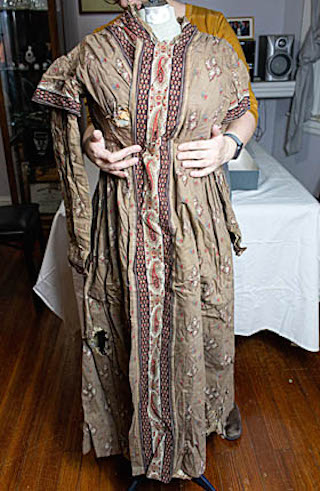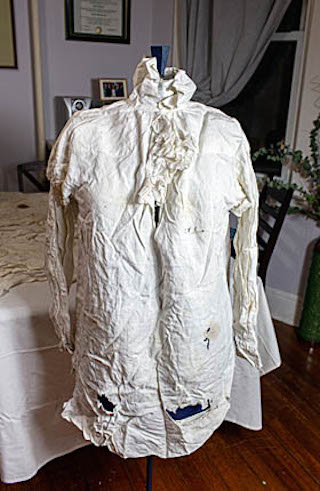WESTMINSTER, Vt. – With the pandemic restrictions, the Westminster Historical Society has had to shut down access to their historical exhibits. Their space at Town Hall and the historic Bradley Law Office have been closed to the public since last spring. But the volunteers who staff the society have been busy on their computers and devices bringing historic clothing patterns to accessibility in a modern way.

Former Westminster resident Sonia Scott, an historic reenactor who, like many re-creators, makes her own authentic costumes, elected to do an internship with the society based on early 1800s clothing found in a trunk in the Bradley Law Office when the building was transferred to the society from the state of Vermont in 2014.
William Czar Bradley was a lawyer, teacher, and politician who is believed to have practiced law in the office from the time it was built around 1810 until he retired in 1857. It then stood virtually untouched until it was given to the state of Vermont from the estate of William Bradley Willard in 1998. The trunk full of clothing and everything else in the building had apparently remained unopened and untouched until society members began exploring the building in 2014. Despite some mouse and other minor damage, they were excited to find what they describe as “a snapshot of life in the early 1800s.”
Alice Caggaino, a member and volunteer with the society, says, “Sonia’s work is taking us into the 21st century with a new kind of offering.”
Scott’s internship was in a program in pursuit of a certificate in Digital Curation from the Johns Hopkins University Advanced Academic Program in Baltimore, Md. She took pieces of the original clothing that had been found and created digital patterns that reenactors and historians can use to make authentic reproductions. She says she had the idea of making patterns when she first started reenacting in 2012, but she didn’t have the opportunity to do it until last year.

She says she found similar projects using various software programs, some of them 3D, “But no one had used the drafting software I did to create sewing patterns for surviving historical garments.” She worked primarily from May through August. She then worked with Dan Axtel of the society to upload images of her work on the society’s website.
Caggaino says, “The society is delighted with the results of Sonia’s work. Since we have never engaged an intern before, this internship was a new experience for us… We all enjoyed ourselves.”
Scott is pleased as well. She says, “My hope is that collecting and documenting surviving everyday clothing we can expand the breadth of representation and quality of historical interpretation. Most of the patterns available today are limited to simple garments, extravagant clothing belonging to higher classes, or special garments that were worn on special occasions… However, in smaller institutions like Westminster Historical Society more everyday or lower class garments were preserved accidentally like in the Bradley Law Office. Digitizing them with my process opens up a lot of possibilities, as the only cost is labor. All the software is free and open source and the only other things needed are decent math skills and a good tape measure.”
Sonia’s work can be viewed on the Westminster Historical Society’s website, www.westminstervthistory.org, or her resulting academic paper, “Fashioning Bygone Fashions: Creating Digital Sewing Patterns from Historic Garments,” through Johns Hopkins University.